The Storied Designer Delivers a Magnum Opus
Photos by Automobili Pininfarina GMBH
You are to be forgiven if the name Pininfarina rings a bell but you can’t quite place any of their earlier cars. There’s a simple answer: they have been creating designs and fabricating bodies for some of the most beautiful cars in the world, but the glory for those cars goes to the names on the hood ornaments, most notably Ferrari and Aston Martin, as Pininfarina didn’t produce cars … until now. And, boy, was it worth the wait!
First, let’s see a little history. Pinin Farina was the youngest (and probably the shortest) member of the Farina family. His given name was Battista Farina, but he was called “Pinin,” the term of endearment for the youngest and smallest family member, and at five foot even, he was both. In 1930, the Farina family already was involved with creating car bodies, and Pinin did that for some time, then he created his own company, calling it Pininfarina to differentiate it from his family’s Farina brand. Flash forward several years. By then, they had had a hand in creating many aspects of the most beautiful works of rolling art ever made, which then were sold under more famous names like Lancia, Alfa Romeo, Cadillac, Fiat, Hispano-Suiza, Maserati, Peugeot, Rolls-Royce, and others. Pininfarina’s designs and bodies graced some of top cars in the world. For the last 40 years, they’ve also had their hand in the designs of buses, trains, yachts, airplanes, and private jets, so they’ve been busy with many types of conveyances.
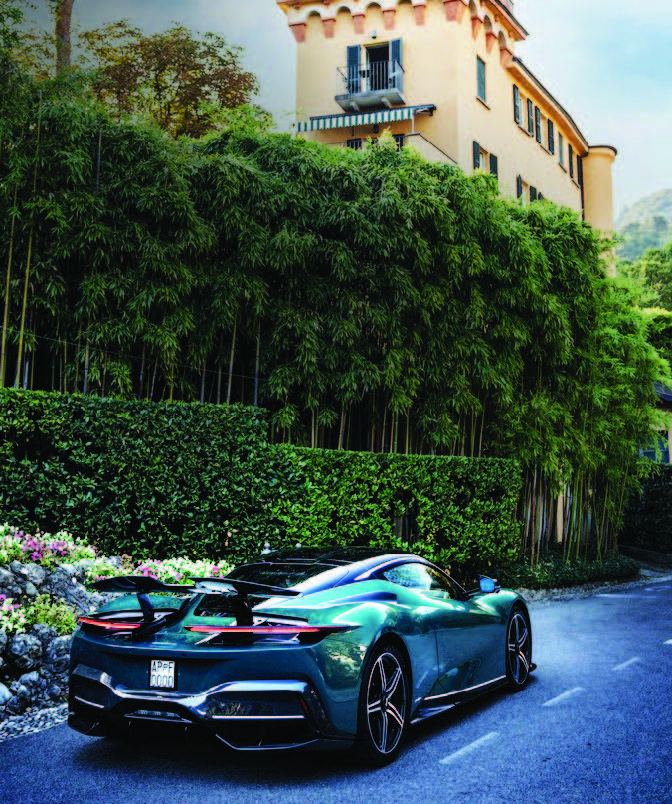
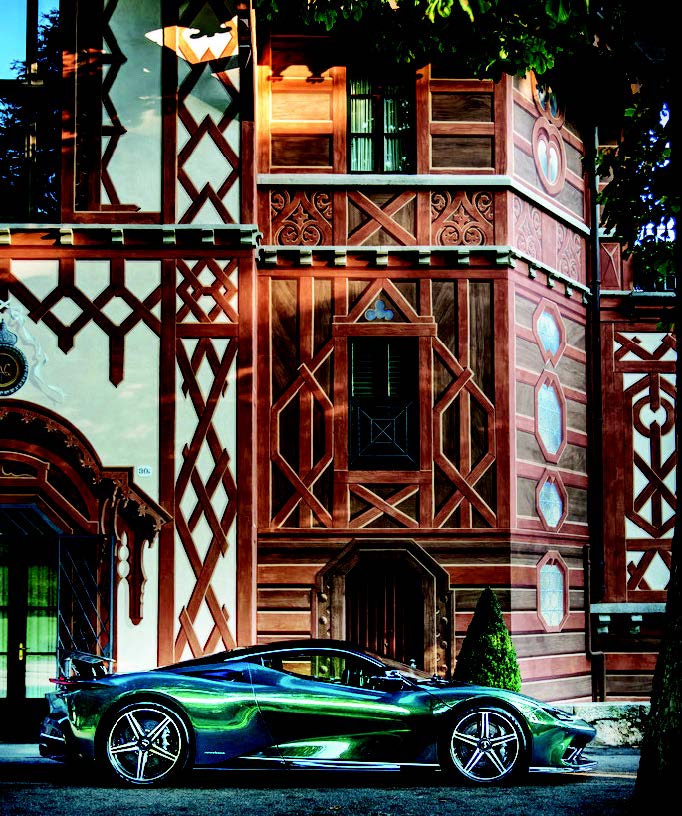
Now let’s look at the company’s efforts over the past few years. In 2015, Mahindra (the multinational car firm based in India) bought over 75 percent of Pininfarina and decided to create a hypercar under the nameplate of Automobili Pininfarina. They christened the car “Battista.” Using the basic workings of the Rimac Nevera (Rimac is the fast-growing Croatian automobile and high-tech company founded in 2009 and which, as of 2021, owns 55 percent of Bugatti), the all-electric Battista is a force to be reckoned with.
I first saw the completed model of the car in 2018, when it was on a roadshow to impress potential buyers and prospective investors. It was gorgeous. Although not an operating vehicle at that time, the fit and finish of the body were superb and its style unique and stunning. It had its formal unveiling at the Geneva International Motor Show in 2019, but it wasn’t until very recently that I was able to see—and drive!—the finished product. I was amazed at how much like the 2018 model it looked; so many cars lose their special touches when it comes to production realities. However, the living and breathing (more on that below) Battista was stunning and was an unbelievable performer to drive.
There’s a certain reality to a car’s design where “form follows function” is clearly the phrase of the day if you hope to be able to go from zero to 60 miles per hour in under 2.0 seconds and hit a top speed of 217 miles per hour (both of which metrics the Battista achieves). The hypercar needs to have a design that cuts through the wind, but which doesn’t become airborne at high speeds. Though I stayed well below the top speed (I was on Mulholland Highway and Pacific Coast Highway, after all), I can assure you that the acceleration numbers are accurate and the top speed seems eminently doable.
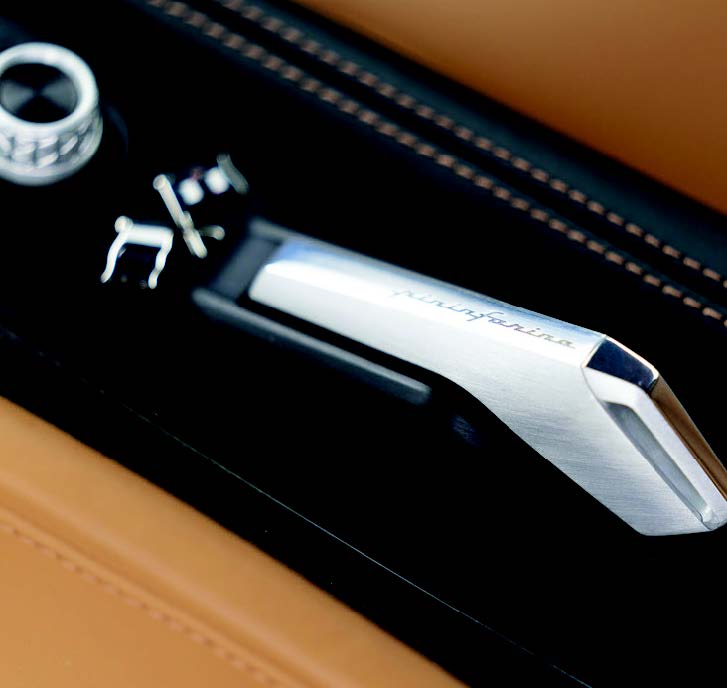
The car is a very interesting and successful combination of beauty, comfort, performance, and intrigue. It clearly has the stance of a champion, and it drew a big crowd wherever we stopped, no doubt because the misty green/gold paint radiated in the sun and because the car’s sound at “idle” (stand-by?) is completely unique. Let’s start with the sound.
Sound engineers play a big role with electric cars, since those vehicles are inherently quiet—no exhaust sounds, no fan noise, no internal-combustion engine (“ICE”) sucking in fuel and exploding it. The Battista’s engineers had two very interesting design goals: to give the car a “personality,” a signature sound that was unlike any other, and to provide the driver and passenger the aural feedback that, like an internal combustion vehicle, makes more noise the faster it goes and the more power being created. Investing a reported 2,000 hours in the process, sampling and combining all types of sounds, they’ve achieved their goals.
They achieved the first goal by using the sound frequency related to the sound of Tibetan singing bowls. The Battista uses a 54-hertz sound which is three octaves lower than that of the Tibetan bowls (432 Hz). That sound not only is audible from outside the car, but you can also feel it when you touch the car, as it literally hums through the carbon fiber body. The Pininfarina folks not only wanted a sound that was unique, but one which would also increase the feeling of well being by the driver. I can’t opine on how successful the car was at making me feel better, but driving a $2,200,000 1,900-horsepower hypercar on some of the best driver’s roads in the world had me feeling pretty, pretty good, even without factoring in the sound!
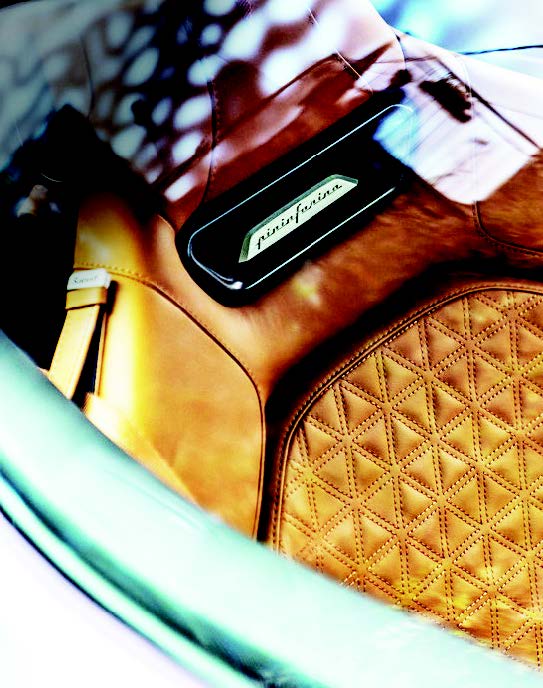
The second goal was interesting, too, as ICE-powered cars mostly whine and growl in a way which is directly related to the power being expended and the acceleration and speed being achieved. What the Battista sound magicians did was create a sound which becomes somewhat louder and higher-pitched the more power that was being utilized and the faster the car was going. For those of us from the past millennium, where analog was king, driving an electric car that provided feedback which is directly related to performance was a welcome addition.
With this background in mind, you can imagine my delight in not only spending the day with the car, but also having lunch with the team: Paolo Dellachà, chief product and engineering officer; Dave Amantea, chief design officer; and Franziska Queling, global head of public relations. It was such a treat for me to be able to visit with the creators of amazing art and have them point out the features and design cues which were important for them in their work. Time with them added immeasurably to the joy of the day.
So, what’s it like to drive? First, one is firmly ensconced within a plethora of leathers, metals, and carbon fibers resembling a fighter jet’s cockpit designed by a high-end interior designer. The controls are easy to understand and operate and all are laid out well for the driver. The seats are beautiful, comfortable, and supportive, necessary criteria to meet when rocketing through the canyons. The whole package together makes it easy to feel at one with the Battista (cue the Tibetan singing bowls here).
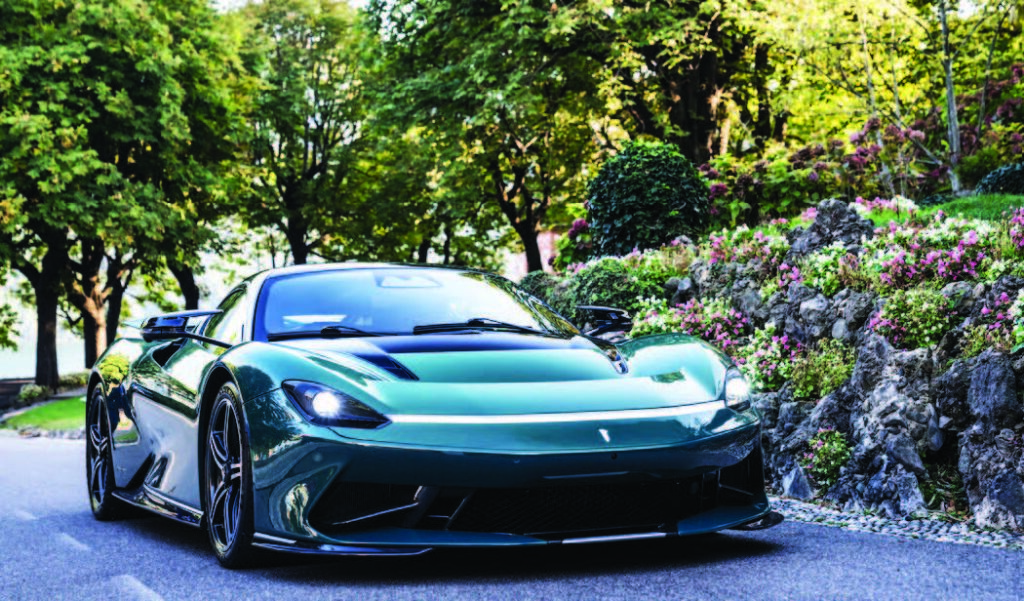
With some 300-plus-horsepower electric motors on each of the front wheels and around 600-plus-horsepower electric motors on each of the rear wheels (let that sink in for a minute), the car is capable of some magic tricks, like slowing the inside wheels and speeding up the outside wheels on a corner to improve turn-in and overall handling. The effect is uncanny, as the car feels like it’s on rails and seems as sure-footed as a panther.
As if anyone who bought a Battista would be concerned about range anxiety (since they also could have a chase truck or helicopter with a generator on board), it gets an estimated 300 miles on a charge. As only 150 Battistas are slated to be built, you likely won’t see one on the road very often.
My time with the Battista was coming to a close and, try as I might, I could not extend the drive or take a quick run to San Francisco. (From Los Angeles at top speed with no traffic, that would take about one hour and 45 minutes.) One thing’s for sure: my Tibetan bowl would have been singing mightily on that run! Bravo, Pininfarina!
